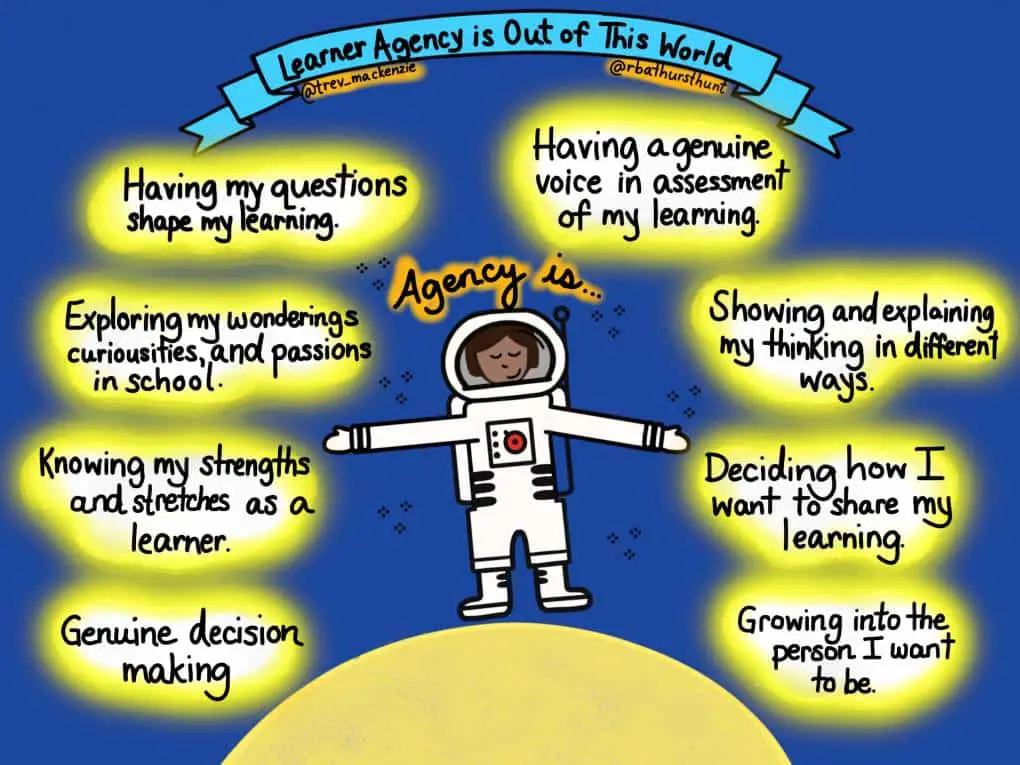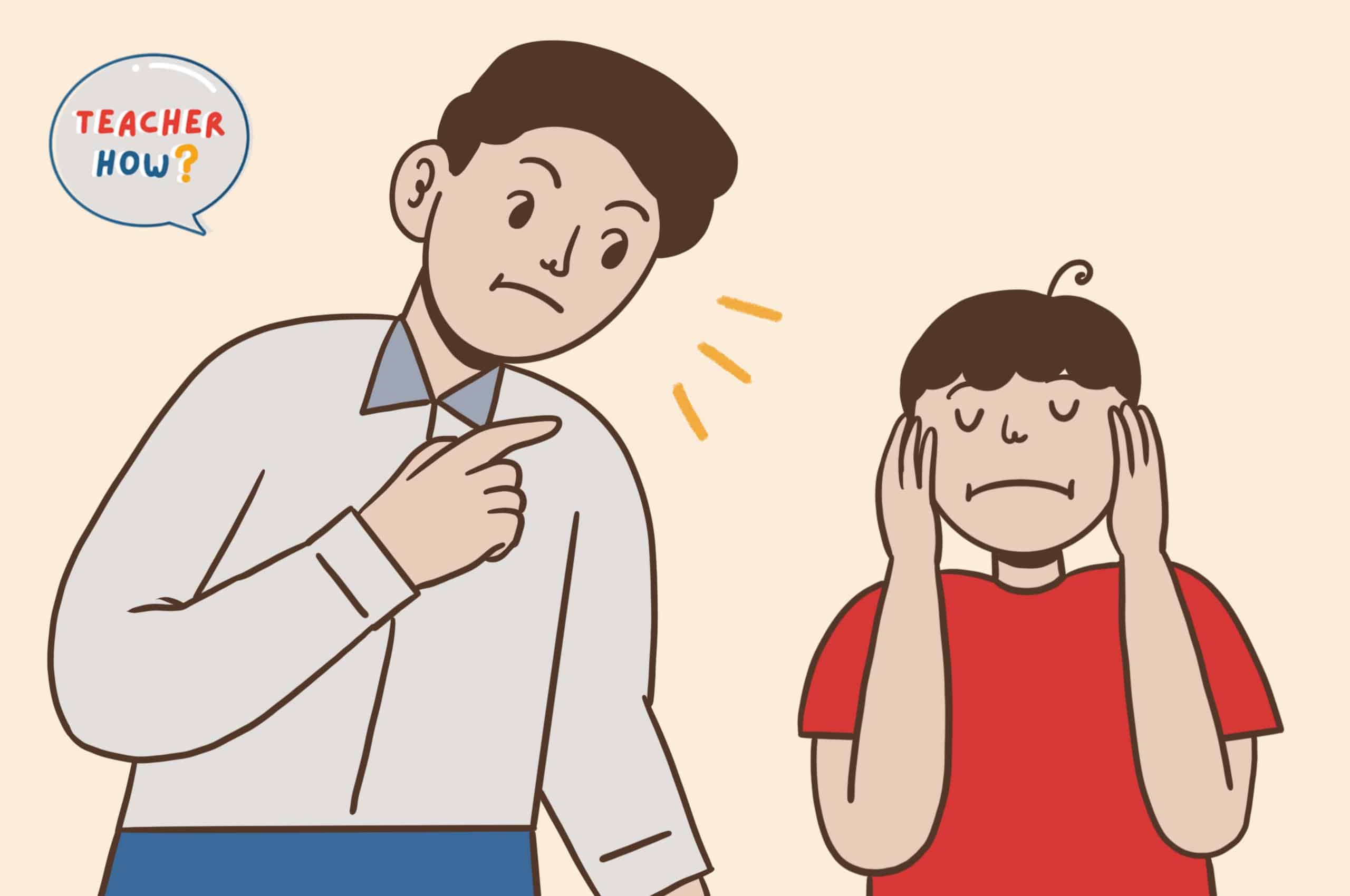Class management can be challenging, especially when some students show a blatant disregard for instructions. Although it may seem easy to yell or raise your voice at a defiant student, we should know better. So, what should you do when a student refuses to listen?
Here are nine things to do when a student refuses to listen:
- Find out why the student is not listening
- Build a relationship with the student
- Adjust your teaching method
- Help the student develop active listening skills
- Establish an easy-to-follow routine
- Repeat or rephrase instructions
- Offer them student agency
- Give the student a leadership role
- Apply positive reinforcement
Many students have problems developing learning skills and remain passive during class time. This article will explore tips on what teachers should do when they notice a learner who seems reluctant to listen or pay attention. So, let’s dive in!
1. Find Out Why the Student Is Not Listening
You’ll encounter students of all types of personalities during your tenure as a teacher. Most students will make your job relatively straightforward, while with a select few, you will have to put in some more effort and energy to fulfill your responsibilities.
If you’re new to a classroom, there could be one student who’s caught your attention because they aren’t following your instructions. Having to face the learner daily can be daunting if nothing seems to work.
One of the most definitive ways to solve the issue is by first establishing the root cause of the student’s behavior. Knowing why the student is not listening will save you time and trouble.
Learners could have poor listening skills due to any or a combination of the following reasons:
- Health conditions: Not all students refuse to listen because they are impolite or disrespectful. A learner could have poor listening skills due to medical conditions, including auditory processing disorder, ear infections, or behavioral disorders. Therefore, it’s crucial to investigate whether students have health conditions limiting their listening skills. If you have concerns, you can arrange a meeting with the child’s parents to see if they can share helpful information regarding the student’s medical background.
- Boredom: Students’ attention will most likely dwindle when they’re bored or uninterested in the subject. If this is the case, don’t be surprised if the student is reluctant to follow instructions or show cooperation. Keep reading the article to find out how you can address the issue of boredom in the classroom.

- Distress: If the learner seems lost in thought and doesn’t hear you talking to them, they could be experiencing some challenges. For instance, there might be some conflicts at home that are keeping your student’s mind occupied. Alternatively, the student may have problems at school due to bullying, victimization, or socializing. If you suspect distress is the reason for thwarting the student from listening, you can seek further advice from the school counselor.
- Their habit: Some learners develop the habit of not listening to teachers. In such cases, the student could have self-esteem issues and enjoy the extra attention they receive when not doing as asked. Moreover, they could have a domineering character where they like to be in control, so they dislike having any authority over them.
- Avoidance: A learner may fail to listen to avoid the teacher or the situation. It could be that the subject is complex, and they don’t want the teacher to be aware of their lack of understanding.
- They don’t know better: Some learners, especially younger children, refuse to listen since they are not aware of the importance of active listening. They may just need more time and practice understanding your expectations. More on this later.
- The teacher’s delivery method: If you’re not audible enough or your tone isn’t convincing, the student may find it hard to listen to you. Sometimes, a teacher can put off a student by expressing their frustrations or doing something that makes the learner resistant. It’s important to impartially assess the way we communicate with our students.
- Distractions: Learners can lose interest quickly when distracted by internal or external noises. The distraction is even worse if the student has an attention deficit disorder.
As you can see, there are a number of possible reasons why a student may come across as if they are not listening. Once you have a better understanding of these points, you can then focus on appropriate strategies aimed at supporting the student.
2. Build a Relationship With the Student

Getting to know your students, their strengths and weaknesses will enable you to understand their behavior. If it’s your first day at school or you’re dealing with a new student who refuses to listen, find a suitable approach to engage them and build a relationship.
Taking time to get to know a student and allowing them to trust you will almost undoubtedly make a significant difference. The learner will stop seeing you as a mere ‘talking head’ but as someone who cares about them. Therefore, ask about their hobbies, interests, fears, and favorite subjects, and learn more about the student.
Having an informal discussion with the student outside of the classroom environment will make it easier for them to open up. While at it, you can ask them if:
- They’re experiencing problems with other students.
- Your delivery method is unclear or difficult to follow.
- They have issues at home.
- They have any suggestions on how you can make your presentation cater to their learning style or interests.
However, if the student is reluctant to disclose the problem, you can try to consult their parents. Since most parents are concerned about their children’s behavior at school, they’ll be willing to cooperate in helping them.
Alternatively, you can ask for suggestions from other teachers who have experience working with the student. They might have tried and tested tips on connecting with the particular student.
3. Adjust Your Teaching Method
Students learn very differently, and they quickly lose interest when the teacher’s delivery method doesn’t resonate with their learning style. Sometimes, you may be unaware that your instructional approach isn’t capturing your learners’ attention.
Part of your job as an educator is understanding how each student learns best and tailoring your teaching style to your students’ needs. Although it’s impossible to cater to each student individually in a whole class context, you can do your best to pay special attention to your students that need a little extra attention.
Here are just two examples of teaching methods that can discourage certain types of learners from paying attention in class:
- Lecture Method: The very traditional and often the least engaging approach. Most students do not feel involved in the lesson, so they will likely lose interest and become passive listeners.

- Directed Discussion: This teaching style involves giving learners a set of questions to discuss. However, if the instructions are unclear or complex, students will often check out and stop participating instead of asking clarifying questions.
Let’s now look at some engaging teaching methods that you can try to capture the student’s attention:
- Interactive Lecture: Although it’s a lecture method, it comprises breaks for student activities. You can allow your students to pair up and ask questions, have multiple-choice items, solve a problem, or participate in a mini discussion. So this will break up your lesson into smaller chunks and make the class less monotonous.
- Just-in-Time Teaching: In this approach, you adjust the lecture or class activities to respond to students’ misconceptions from prior knowledge. You can also motivate the learner to participate in class through lesson starters or quizzes.
- Role Plays and Simulations: Give the student more of a voice by allowing them to act out the teacher role. In this activity, the student can present or read instructions while the others take turns to answer. Alternatively, you can whisper instructions in the learner’s ear and let them go to the front of the class to tell the other students.
I would highly recommend reading more about the other teaching methods found in the University of Buffalo article. As you learn about the different approaches, you will feel more comfortable adjusting your teaching to captivate a wider audience.
4. Help the Student Develop Active Listening Skills
Many learners have problems listening because they haven’t acquired active learning skills. If students haven’t developed this capability, they’ll be reluctant to listen to instructions or may find the lesson boring. Additionally, they’ll be unwilling to share their thoughts or participate in group discussions.
Show your students that you care about them and are willing to help them become better listeners. This will motivate them to pay close attention to what you say.
Additionally, be a good role model by consistently demonstrating what active listening looks like when interacting with your students.
Let your students understand that active listening is a skill they will use in their everyday activities. Besides helping them acquire knowledge in class, active listening will be essential in future interactions. So, they’ll foster understanding, improve relationships, strengthen cooperation, and minimize conflicts.

Developing listening skills is a process, so be patient with the student. And as a teacher, you should understand the different stages of active listening, which are:
- Receiving stage: It comprises the hearing and attending process. Hearing occurs when we register sound waves that are hitting the eardrum. On the other hand, attending involves interpreting those sound waves as words. If you don’t hear the sound waves clearly due to background noise or ear problems, you can’t interpret them accurately. So, one must ignore the peripheral noise and focus on the speech sounds to be an active listener.
- Understanding stage: It involves determining the meaning and context of the speaker’s words. Some students only listen to a teacher’s voice without trying to understand what the words mean. Moreover, they can be too afraid of asking questions to put meaning to the spoken words.
- Evaluating stage: It is a crucial stage that entails assessing information qualitatively and quantitatively. Here, we consider what a speaker has said to determine whether it is true or false, biased or unbiased, organized or disorganized, meaningful or insignificant. However, you can only do this after understanding the message clearly.
- Responding stage: In this stage, the listener responds to the speaker’s message through verbal or nonverbal cues. Verbal responses include asking questions, requesting further information or clarification, and repeating the message. Nonverbal cues include nodding, smiling, maintaining eye contact, hand gestures, or using body language. A response changes the listener from a passive to an active one.
- Remembering stage: It is the point where the listener categorizes and retains the speaker’s message for later use. Interestingly, we retain information for longer if we understand and use it immediately after listening.
Now that you are aware of these stages, here’s what you can do to help your students become better at active listening:
- Capture their attention before you speak – by maintaining eye contact, moving closer to the student, or calling their name.
- Facilitate the student’s understanding – by using short sentences, repeating or paraphrasing instructions, allowing the learner to write them down, and using nonverbal cues to reinforce your message.
- Evaluate the learner’s understanding – by asking questions, requesting them to repeat the instructions, or letting them tell another student what they’ve understood.
- Let them develop accountability in listening – before you speak, provide an outline of ideas that the student will fill in after listening to you.
- Lead by example – by demonstrating that you’re a good active listener who also listens to your students. Prove it by restating the learner’s response to show that you heard and understood what they said.
- Keep the learner on their toes – by calling on students randomly to answer questions to ensure they’re alert.
- Utilize multisensory learning – by adding auditory or visual aids when teaching. These will allow the student to use two or more senses, which can be far more stimulating.
5. Establish an Easy-To-Follow Routine
If your students are not clear on what you expect from them, they can’t be blamed entirely for their conduct. The obvious remedy is having an easy-to-follow routine that your learners will practice daily. That way, they’ll know what to do and when.
To get your students involved, try developing a predictable system that they can easily follow to prevent misunderstandings. For example, you can establish that students should raise three fingers if they don’t understand your instructions. This way, you can act sooner to clarify the information, saving yourself and the student a great deal of frustration.
If you have no idea what routines to introduce to your class, The First Day of School: How to Be an Effective Teacher by Harry and Rosemary Wong (available on Amazon.com) will offer some excellent guidance.

The book depicts various ways of building consistent routines that aid in class management. It is suitable for teachers in all grade levels and provides an easy-to-implement teaching triangle.
6. Repeat or Rephrase Instructions
Repeating instructions frequently can consume precious lesson time. There is also a theory that it makes students lazy and discourages them from listening the first time. However, if a student has difficulties hearing or understanding you through no fault of their own, repeating instructions is undoubtedly necessary.
Working in numerous international schools where English was not the native language, I learned how important rephrasing and repeating instructions could be. For students who really struggled to grasp the information the first time, I would have them sit nearer to me, use simpler and shorter sentences, and speak much slower.
You can also reinforce the oral information using:
- Written instructions.
- Visual aids.
- Gestures or nonverbal cues.

Repeating instructions is not a sign of weakness – far from it! It shows your students that you are an understanding and patient teacher, which will strengthen the rapport you have with your class.
7. Offer Them Student Agency
Students often feel motivated to listen and learn when they think the teacher is interested in hearing their opinions. So, offering the learners a few options will enhance their decision-making skills. Moreover, they’ll feel more empowered and be happy to participate in learning after you’ve allowed them to make decisions on their own. This is called “student/learner agency.”

For example, if your student learns better through questioning, be sure to include a question after giving the instructions. Then, offer a choice of two or three possible answers before asking the student for their feedback.
Also, when starting a lesson, you can allow the student to choose how they want to set up their desk or workstations. Being actively involved in this task will motivate them. Additionally, when giving assignments, let the student choose from two or three different variations of the assignment.
Offering choices on learning activities will also make the lessons fun and engaging. For example, you can break the monotony of a reading comprehension lesson by having a few options on how the learning will be demonstrated, e.g., they can create artwork, perform a drama piece, or record a vlog related to the reading.
8. Give the Student a Leadership Role
Some students do not listen to the teacher because they crave more attention and influence. Such learners may have a defiant stance towards you or challenge your authority.

If you identify that a learner has this issue, don’t engage in a heated debate with them. Also, avoid displaying negative body language. You can show them they are valued by giving them leadership roles.
For instance, you can appoint the student as a group leader or speaker in discussions. So they’ll offer instructions on your behalf or present the group’s findings in front of the class.
Many jobs can be delegated to students, such as assigning the task of collecting and distributing books. For an added incentive, make a deal with the student that if they do a great job with the books, they will be ‘promoted’ to handling more valuable equipment, like laptops.
Why not make this point come to life with a ‘classroom job chart’ display? Check out the article below for ideas on how to get the best out of delegating responsibility and leadership to students.

These new roles will likely make your students more focused and attentive.
9. Apply Positive Reinforcement
As discussed earlier, students can struggle to pay attention in class if they’re distressed. If you suspect that a student has a negative attitude due to problems at home or school, it’s crucial for you to foster positivity. Positive reinforcement will help the learner build their confidence and overcome their difficulties.
When getting to know the students, always identify their strengths first. Then, use any chance you get to praise them and give positive feedback. Don’t forget to encourage them to use their talents and abilities during class.
For instance, if a student is good at poetry, have them write a poem and present it in front of the class.
Foster positive interactions with the learner every time you enter the classroom. You can greet them, nod, or simply smile at them. Moreover, when offering instructions, maintain eye contact with the learner and show a relaxed body image.
Here’s a YouTube video that summarizes factors that make students not listen in class and effective class management strategies:
Final Thoughts
A student may fail to pay attention or listen in class for various reasons. Although it can be frustrating for us teachers, finding the root cause of this behavior is always the best starting point. Don’t forget to build a relationship with them to identify the best strategies to improve your student’s listening skills.
Sources
- Healthline: What Is Auditory Processing Disorder (APD)?
- Psych Guides: Behavioral Disorder Symptoms, Causes and Effects
- Eurasian Journal of Educational Research: Active Listening Strategies of Academically Successful University Students
- Faculty Focus: Active Listening: Seven Ways to Help Students Listen, Not Just Hear
- University of Buffalo Office of Curriculum, Assessment and Teaching Transformation: Teaching Methods
- Minds in Bloom: How to Get Your Students to Listen Without Yelling
- Lumen Learning: Active Listening in the Classroom
- Education World: The Student with Poor Listening Skills
- Waterford: Why Multisensory Learning is an Effective Strategy for Teaching Students How to Read
- Edutopia: Say What? 5 Ways to Get Students to Listen
- Verywell Family: Correcting Behavior in a Child Who Won’t Listen
- The Highly Effective Teacher: 10 Ways to Deal with a Student Who Won’t Engage
- YouTube: Classroom Management Skills that Make Kids Listen
- Scholastic
- KQED: How Can Teachers Nurture Meaningful Student Agency?
- We Are Teachers: 38 Ideas for Flexible, Fun Classroom Job Charts


